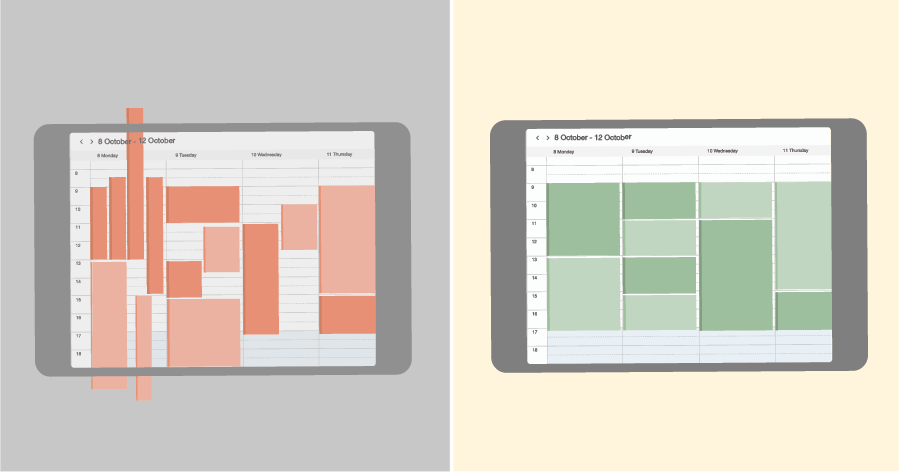Customer expectations continue to rise. Whether you are active in IT services, accounting, consultancy or technical services – customers demand faster service, more transparency and a flexible approach. At the same time, many service organizations are struggling with a shortage of specialized employees and increasingly complex planning.
How do you avoid falling behind? The answer lies in a strategic and efficient approach to resource planning. Well-organized planning helps you deploy the right people at the right time, without leading to overload or inefficiency. In this blog, we discuss how better resource planning can help you meet growing customer expectations.
The impact of increasing customer expectations
Service organizations deal with customers who:
- Expect fast service : Long lead times are becoming less and less acceptable. Customers want to be helped immediately and expect fast turnaround times for projects.
- Demanding personal attention : Customers want service that meets their specific needs, without feeling like a number in a queue.
- Demand transparency : Whether it concerns lead times, rates or available expertise – customers expect real-time insight into the status of their project.
If you are a service organization that is unable to deliver quickly, provide personal attention and transparency, you are running a significant risk. Customers become frustrated by slow responses and unclear communication, which can lead to negative reviews and a bad reputation.
In addition, there is a good chance that customers will switch to competitors who do operate efficiently and customer-oriented. Moreover, poor planning often results in overloaded employees, which can result in higher failure rates, errors and lower productivity. In the long term, this not only means loss of turnover, but also higher operational costs and a poorer work culture.
How good resource planning helps you
Optimized resource planning enables you to proactively respond to customer expectations. Here are three ways you can achieve this:
1. Improved availability and speed
By having a clear overview of your employees’ availability, you can quickly respond to customer requests. A well-maintained schedule helps you to:
- Available specialists can be directly allocated to new assignments.
- Schedule real-time changes without causing chaos.
- Identify bottlenecks before they lead to delays.
This means you can help customers faster and be flexible with last-minute changes.
Pro tip : plan the big projects first because they will take up the most of your resources. Use smaller projects more as filler and set less hard deadlines or at least much further in the future so you can easily meet them.
2. Better use of specialist knowledge
Not every employee is suitable for every assignment. Good resource planning helps you to deploy employees based on their skills, experience and availability. This ensures that:
- Customers are always helped by the most suitable expert.
- Employees work more efficiently and effectively, which increases productivity.
- Fewer mistakes are made, which increases customer satisfaction.
This strategic use of resources allows you to increase the quality of your service without creating additional workload. This does require you to maintain a competency matrix and actively maintain it. The quality of your service depends on this.
3. Transparency and customer communication
A dynamic planning not only provides insight for your internal organization, but also for your customers. By providing more transparency about planning and progress:
- Can customers have realistic expectations about lead times?
- Reduce unnecessary emails and phone calls about project status.
- You can respond more quickly to changes without this leading to dissatisfaction.
Customers appreciate this openness and have more confidence in a company that proactively provides updates and communicates clearly, rather than an organization where they constantly have to chase information themselves. This not only increases customer satisfaction, but also the chance of long-term customer relationships and positive recommendations.
The role of technology in resource planning
Manual scheduling is no longer sufficient. Modern service organizations use specialized software that helps to:
- Automate planning : Spend less time on manual planning and reduce the chance of errors.
- Create links with other systems : Such as CRM and ERP software, so that all information is available in one place.
- Predictive planning : Data analysis enables you to identify and anticipate future bottlenecks and opportunities.
By using technology intelligently, service organizations can gain a competitive edge and provide a better customer experience.
Conclusion: resource planning as a strategic advantage
Rising customer expectations are a challenge, but also an opportunity. Organizations that optimize their resource planning can respond faster and more flexibly to customer requests, deploy the right employees to the right assignments and offer more transparency and better communication with customers.
By investing in smart and efficient planning, you ensure that you not only meet customer expectations, but even exceed them.




